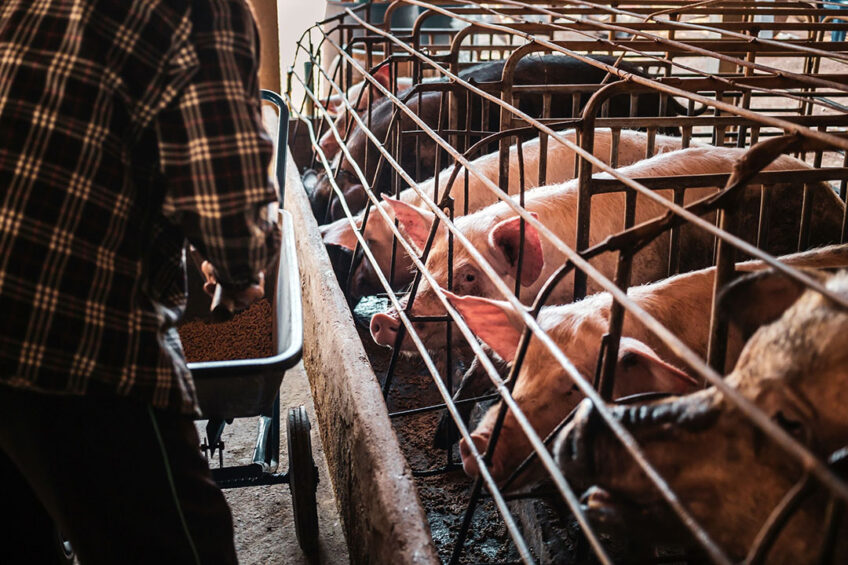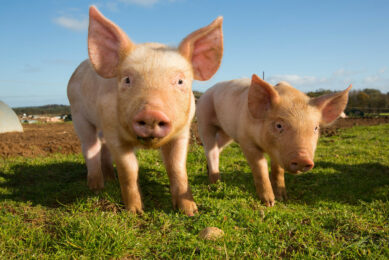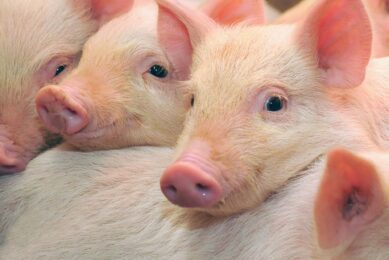Protecting pork producers: role of feed sanitation

African Swine Fever (ASF) and Porcine Epidemic Diarrhea Virus (PEDv) are a major concern for pork producers worldwide, impacting animal welfare and resulting in significant economic losses. There is no one solution to eradicating these viruses and stopping their transmission, so reviewing and strengthening your operations biosecurity programme is more important than ever.
ASF and PEDv can have significant long-term effects on pork producers. Highly contagious, rapidly spread and relatively resistant ASF is difficult to control and, when present, results in operational depopulation. PEDv, on the other hand, causes severe diarrhea in pigs, leading to dehydration, weight loss, and, in some cases, death. Both viruses bear significant economic costs for pork producers, including reduced productivity, increased mortality rates and decreased demand for pork products.
“On the production side, the impact of PEDV is significant. It greatly reduces the reproductive efficiency of sows, increases the mortality rate of both sows and piglets, and results in a lower number of piglets weaned per year, ultimately leading to higher piglet costs on the sow farm,” explains Anitox global technical director for swine markets, Dr Francisco Domingues.
He adds: “On average, one break of PEDv can result in a full month of piglet losses. Once the disease has been eliminated it takes around 14 weeks to stabilise the farm again. Furthermore, PEDv decreases performance via increased pig mortality and worsened ADG and FCR. The situation is more severe with ASF, as total depopulation of the pigs on the affected farm is necessary, resulting in massive losses. Additional costs are incurred with both viruses due to extra downtime and cleaning.”
So, what can producers do? Review current biosecurity programmes to ensure they are as comprehensive as possible.
“Crucial elements of a comprehensive biosecurity programem include bioexclusion, biocontainment and biomanagement to prevent disease introduction, minimise spread and maintain overall herd health. Consistent application of biosecurity initiatives is critical to their efficacy and are best supported with clear standard operating procedures and working instructions,” says Domingues.
Is feed a key component of a comprehensive swine biosecurity programme?
While it is important to note that this programme should encompass more than just feed-related measures, feed has been evidenced as a potential fomite for swine viruses.
“Numerous studies have examined the ability of viral pathogens to survive in animal feed ingredients and feed products. Researchers have discovered that some feed matrices are more favorable for virus survival than others, and specific ingredient matrices can enhance virus survival,” says Domingues.
He adds: “In one study simulating transoceanic shipment, ASF exhibited a feed half-life ranging from 9.6 to 14.2 days, meaning that in roughly 2 weeks, the total concentration of viable virus only decreases by half its original count. Moreover, feed has been identified as a source of infection and a significant biosecurity risk. Real-world experiments that model virus transmission via feed confirmed the recovery of PEDv from contaminated feed and demonstrated that contaminated feed could cause disease within the herd.”
Domingues noted that similar studies on ASF transmission via feed found that the infectivity of contaminated feed increases due to repeated exposure. In simpler terms, repeated exposure of the herd to contaminated feed reduces the viral load required for infection.
Considerable efforts have been made, but more work remains regarding developing reliable and standardised monitoring protocols for feed mills, especially concerning minimum infectious doses and the efficacy of current virus deactivation methods at the mill level. When looking to feed pathogen control to further strengthen biosecurity and surveillance in the entire system, it is necessary to exercise control over ingredients/raw materials arriving at feed mills, the biosecurity of feed mills, transportation and farm-level biosecurity.
“Feed mills must prioritise biosecurity measures to ensure the safety of animal feed. While heat treatment is commonly used to control feed-source pathogens, in some cases it may not be sufficient to inactivate certain viruses like ASFv. Furthermore, heat treatment does not provide continued protection during transportation and storage, leaving feed vulnerable to recontamination,” explains Domingues.
Innovations and technologies for mitigating the risk of ASF and PEDv
Producers are leveraging different innovations and technologies to support their biosecurity measures.
Feed producers use various techniques to manage raw materials and prevent the spread of pathogens, including long holding periods for high-risk materials. Feed pathogen control solutions have an important role to play, especially with high-risk ingredients and finished feeds, to protect against multiple pathogens until the feed is consumed.
Feed pathogen control solutions, including organic acid blends and feed sanitisers, vary in efficacy but grant producers the ability to implement risk-dependent control. Feed sanitisers, such as Termin-8 and Finio, are effective at reducing the viral load in feed, therefore preventing clinical disease. Organic acid blends, such as Fortrol, can optimise the microbial quality of feed to improve food safety and animal performance. Clean feed supports animal production by reducing bacterial and viral challenges entering the production system, supporting gut health, immune function and growth.
To learn more about how feed sanitisation can further support your comprehensive biosecurity programme, visit www.anitox.com.





